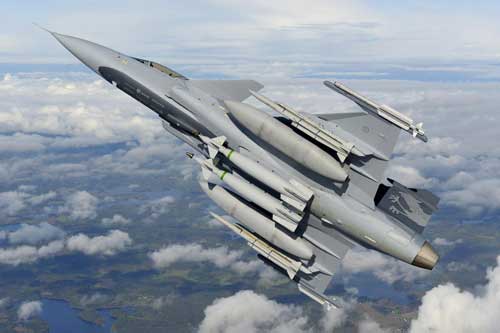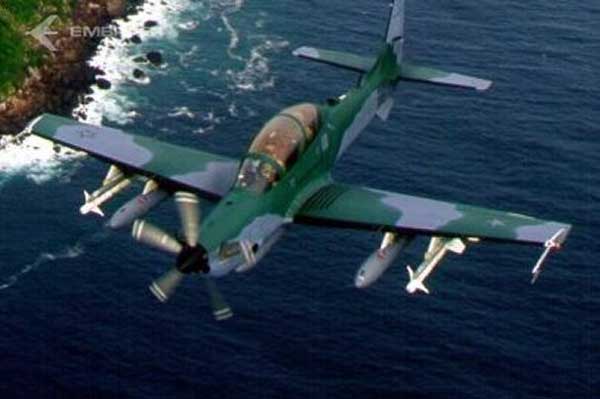By Dr. Robbin Laird
06/19/2011 – The opportunity to discuss the potential impacts of Indian and Brazilian fighter competitions on the next phase of global development presented itself when I crossed paths with Reuben Johnson at the Airbus Military Trade Media event in mid-May
SLD: I’m talking to Reuben Johnson, one of the world’s leading experts on global military aviation. Johnson is a defense and aerospace correspondent for Jane’s and for the Weekly Standard and for Aviation Week Show News.
Let us start by talking about the impact of the Indian fighter competition.
Johnson: There are strategic implications because the Bush Administration worked a long time on the partnership with India. But this came down to, I think, fundamentally people not understanding local politics and prioritizing different issues in India.
SLD: From the standpoint of the customer, so to speak.
Johnson: In the case if India, and what you have is a very simple equation. You have a defense minister who’s basically almost a communist and very, very left wing and sort of a visceral distrust and dislike of anything American. You have an industry that wants as much industrial participation as they can possibly get because that’s the name of the game in India is feeding this huge machine called Hindustan Aeronautics Limited. And there is some sort of remaining apprehension about American embargos. The Indians have seen what’s happened in the past and having seen what happened with Pakistan.
And then the Air Force if you tell them they have so much money, they’ll figure out how much each airplane cost and divide the money. If you tell them they’re going to buy so many airplanes, they’re going to buy the most expensive airplane they can get. So they pick the two most expensive airplanes, both of which offer some fairly generous industrial participation programs in India and also no problems with release of source code and other technology.
 Gripen NG Demonstrator with Iris-T, Meteor and GBU10 (Credit: http://air-attack.com/images/single/829/Gripen-NG-Demonstrator-with-Iris-T-Meteor-and-GBU10.html)
Gripen NG Demonstrator with Iris-T, Meteor and GBU10 (Credit: http://air-attack.com/images/single/829/Gripen-NG-Demonstrator-with-Iris-T-Meteor-and-GBU10.html)
SLD: Is this similar in the Brazil?
Johnson: When it comes to Brazil, the chief criteria have been what does industry get out of this thing? And the Brazilians will tell you flat out that Embraer is the jewel in the crown, the most popular airplane they have now, the best – their big success story are these, the E-Jets, the E-170 to 195 family.
And they will tell you, they will say, “If we did have – if we had not done the AMX program with the Italians way back when, we would not have learned enough about aircraft structural design to be able to do the E-Jets.” If we hadn’t done the E-Jets, we wouldn’t be doing the KC-390, the tanker cargo airplane they’re doing. Industrial participation is crucial.
SLD: So any combat aircraft purchase is part of the next phase of development and manufacturing in Brazil?
Johnson: What that means development; it does not mean getting a CD from Boeing with a bunch of drawings that says go build this. It’s actually participating in the design and development of the aircraft locally.
As the VP for all military programs at Embraer says: “The way you get technology transfer,” he says, “is by on the job doing.” That’s exactly how he says it. But what he means is that if you’re not sitting there designing an aircraft, not sitting at a drawing board, you’re not actually doing the actual developmental work, you don’t really learn anything.
The Brazilians will tell you that the F-18 is an old design, it’s already developed, there’s nothing there, yes we can get some piece part work from Boeing that really doesn’t advance the state of our industry very much. The Rafale is also basically an already designed airplane, it’s been sold in small numbers. But the Gripen NG, it’s a prototype; the program is there to develop.
And, by the way, it’s cheap enough that if you produced it in Brazil, you could sell it to every other country in the region. And you could sell it to other places. There are countries in the world, say for example Viet Nam who would be interested in a Brazilian produced Gripen, but not by a Gripen made in Sweden. But they would buy a Gripen made in South America because Brazil has this image of being one of the leaders of the BRICS, which is kind of open to everybody non-aligned.
And if the Gripen goes out of production, the only people left making a fighter that costs under a hundred million dollars will be the Chinese. And if you look at the deal that SAAB made with Thailand, what do they get? They have the fighters, they have the ground base command and control and EW. And they have the AEW and C aircraft, all from one company Saab, one stop shopping. No American content, so no stuff about the export controls and you can’t have this, you can’t have that, you won’t say this, and you won’t say that.
The Brazilians want to become exporters. And Saab really likes that.
 Super Tucano in Flight (Credit: http://www.defenseindustrydaily.com/elbit-avionics-for-colombias-super-tucanos-02473/)
Super Tucano in Flight (Credit: http://www.defenseindustrydaily.com/elbit-avionics-for-colombias-super-tucanos-02473/)
SLD: The U.S. is out of the Indian competition and if it does not win in Brazil, then is the United States out of the 2nd and 3rd world combat aviation market?
Johnson: We forgot the F-16 experience. We did the Henry Ford thing; you can have any color you want as long as it’s black. These are all the things it does and by the way, this is how much cheaper it is than everybody else.
And we got into trouble because we started to build unique configurations, and now you’re overhead costs are rising and then you’ve got all these other problems. As long as you can pump these things out and say this is what you’ve got, and by the way, if you look at the cost per flight hour numbers, they’re staggering.
The maximum cost per flight hour of the Gripen, with what the South Africans are paying is around $5,000. Other places it’s less, it’s between $3,500 and $4,000 per flight hour. The cost per flight hour on the Eurofighter, if you ask the Germans, is 40,000 Euros. And if you ask the RAF, because they’re doing more things with the aircraft, and they count their numbers differently, they’ll tell you the cost per flight hour is 96,000 pounds.
Now, we’re talking about magnitude, we’re on the scale, this little Gripen is down here and this thing is way up here.
SLD: So the Brazil deal is really a crucial one to make this a buyable export?
Johnson: Yes, because they’re out of India, Brazil is very important. And the Brazilians want to learn enough about designing an airplane so that ten years down the road they can design a fighter for Brazil that’s a next generation thing that’s all their own, that they’ve done on their own.
SLD: Let us discuss the new Embraer lift aircraft (the KC-390). What is your assessment of its prospects?
Johnson: I will tell you right now and I have seen in my lifetime many, many, many, many briefings by aerospace companies about what they think the market is. Embraer is by far the smartest company I’ve ever seen about looking at a market and saying, okay over the next X number of years there’s going to be so many opportunities to sell X-type of aircraft. And we think realistically we can get this percentage of it and that works out to so many numbers.
They’re not like American companies that no matter what you ask them, they always say that they can get 50% of anything. Which is just not realistic. They’re very smart about that, they’ve been very smart about the way they develop the airplane. As I said, they built it on top of the – of the E-jets, the structure, the design. They’ve been very smart about how they looked at the engines of the aircraft. I think it’s going to be a great airplane and it’s going to be the airplane everybody needs. Everybody who has IL-76’s, old C-130s will be a potential customer.
SLD: What about the Super T in the U.S. market?
Johnson: We’re doing the same thing with Super Tucano that we did with Leopard 2. Remember the famous competition between the M-1 and Leopard 2? And the Leopard 2 won, but no, we’re not going to buy a German tank, it has to be something build in America, so we built the M-1. Now the M-1’s great it does all these things but why bother having a competition? Okay? You’re either going to buy the Super Tucano or you’re not.
The Embraer guys are really smart. And I say – I asked them, I said, “How many of these aircraft do you think can be sold in the next 10 years?” And they said, “300 aircraft in the next 10 years.” And I said, “You mean you think you guys can sell 300 aircraft in the next 10 years.” They said, “No, no, no, we think the market worldwide for aircraft in the next 10 years, it’s 300 total.” So you’re talking about getting a portion of that yourselves? Yes, that’s right. Even if you can get 100% of 300 aircraft it’s not enough to amortize the non-recruiting engineering costs of an AT-6. I mean, that’s the reality.

